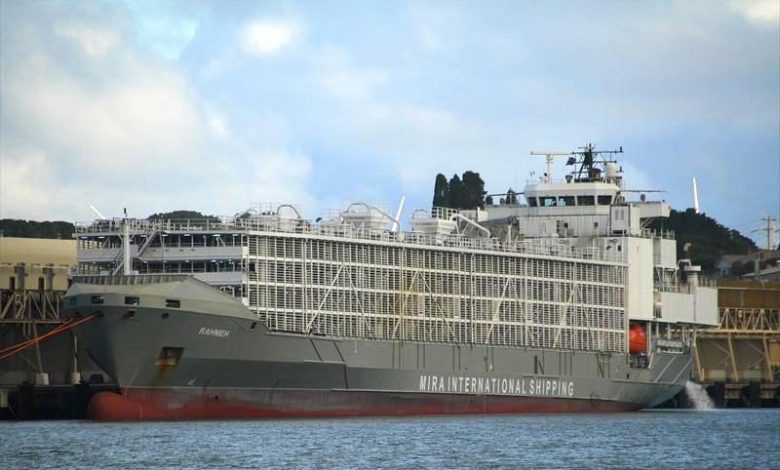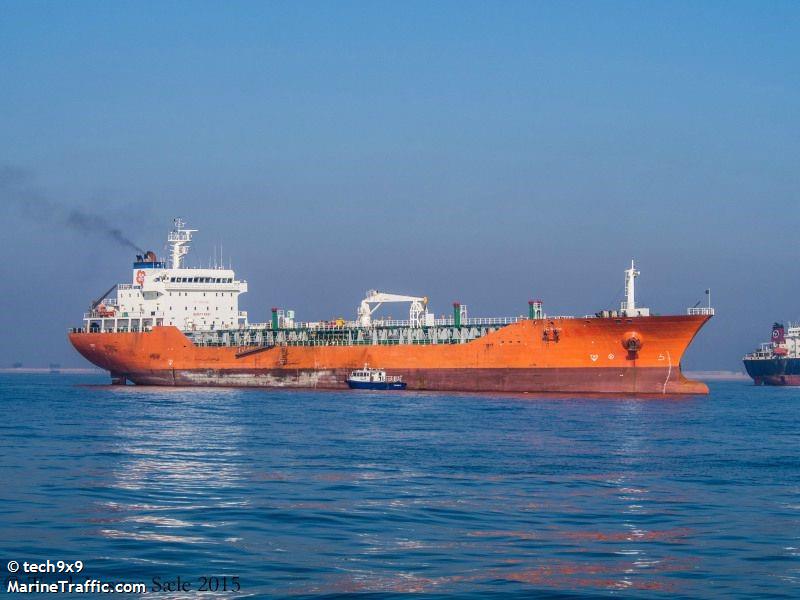Families of the missing Gulf Livestock 1 crew urge authorities to resume search operation

Families of the missing crew on the sunk Gulf Livestock 1 have urged authorities to resume their search and rescue operations.
The Gulf Navigation ship sunk in a typhoon eight days ago off southern Japan. Japanese authorities yesterday called off the official search mission, having managed to find two survivors and one dead crewmember. 40 men remain unaccounted for.
Families of the missing are holding on to the fact that four liferafts and one lifeboat remain missing, and the area where the ship went down is dotted with many uninhabited islands.
“In the whole search area after picking up two survivors and another Filipino who has since died, we expect to either find bodies or other debris that would indicate where the other survivors were, and there’s been nothing,” Guy Lockerbie, the father of one of the missing New Zealand crew, told Checkpoint, a drive-time show on Radio New Zealand.
The Gulf Livestock 1 started its trading career as a 630 teu containership in 2002 before being converted to carry animals 10 years later. The sunken ship had a chequered past. European shipping database Equasis lists 25 port state control deficiencies in 2019 and 2020 alone, including a number relating to the main engine. In July last year the ship drifted for a day undergoing repairs following an engine failure.

 have urged authorities to resume their search and rescue operations.
have urged authorities to resume their search and rescue operations.
Japan must read SAR Convention 1979, chapter IV; It seems they ignore the internatonal law.
If four liferafts and one lifeboat remain missing, a person or more can survive on board for several weeks; the SAR Convention obliges Japan to keep searching because there are reasonable hopes of finding more survivors.
JAPAN MUST KEEP SAR UNITS WORKING!!
I agree with you
Not sure if anybody has seen news from Philippines and translated. Common law wife of Jaynel Rosales (one of the survivors) was interviewed. Jaynel told her he was with one of the Australian crew who is the “third mate” when he was flushed out (by waves i suppose). When he resurfaced, he didn’t see the guy anymore and saw a cow carcass and hang on to it. moments later he saw a raft and got in. I’m not related to anybody from the ship but I follow any news about it and fervently praying more survivors will he rescued…if not all ?
I agree with CAPETAN MANOLIS….the search must continue….the 2nd survivor said all but 3 crew members where on the bridge with life jackets on ready to abandon ship prior to it being struck by a wave which sent him over board…..the auto deploy raft float only releases with HRU which takes 4 meters pressure of water to release. This indicates these rafts were able to release, 3 more are unaccounted for along with 1 life vessel which may or may not have been manually released. beside all this evidence they still have not found a debris field?!? Even a canoe equipped for camping loses enough floating debris on average to leave some indication of it last position in a body of water – You cant tell me a ship of this size with all this gear did not leave behind more floating debris than a ball of orange rope and life vest…… Each of these life rafts/vessels have a minimum amount of supplies on each craft – some of such items are flares/patch kit/knife/fishing tackle/sea sickness pills /first aid kit……with this all in mind they definitely have a chance at survival well over the 7 day search effort that was made – time is ticking its time to get authorities in volve and get asset back in the search area combing the water / islands
A quick search of the internet shows that the sea water temperature in the area where the sinking occurred is a about 27º C. at this time of year. A further net search shows that survivor in water of this temperation will likely become unconcious from exhaustion or hypothermia after about 12 hrs. However, the period in which they may remain alive is stated as ‘indefinite’. The Chief Officer was rescued alive and concious after a reported 12 hrs. in the water wearing only a lifejacket and light clothing. This optimum in water survival period has long past but, as suggested by other commentators, it is not impossible that there are other life rafts still afloat with survivors on board. The Australian Government is pressing Japan to continue with the search. It would be tragic if the Japanese CG does not do so and, as Capt Manolis suggests, arguably contrary to the requirements of the search termination obligations of the SAR Convention at Annex 1., para 5.5.2.3.
Agreed Robert E Gordon, statements you have made may be true on time able to live on average in the water….however if in one of the life rafts,which are they – Viking 25 DK…they would be equipped with a SOLAS A emergency kit which includes enough supplies to live at sea for well beyond the search efforts made so far…..water temperature is stating to be average 22c to 29c this time of year which would only aid their survival rate.
Shouldn’t have they have at least found the main debris field? It is not illogical to think the rafts could be floating in the proximity of the debris